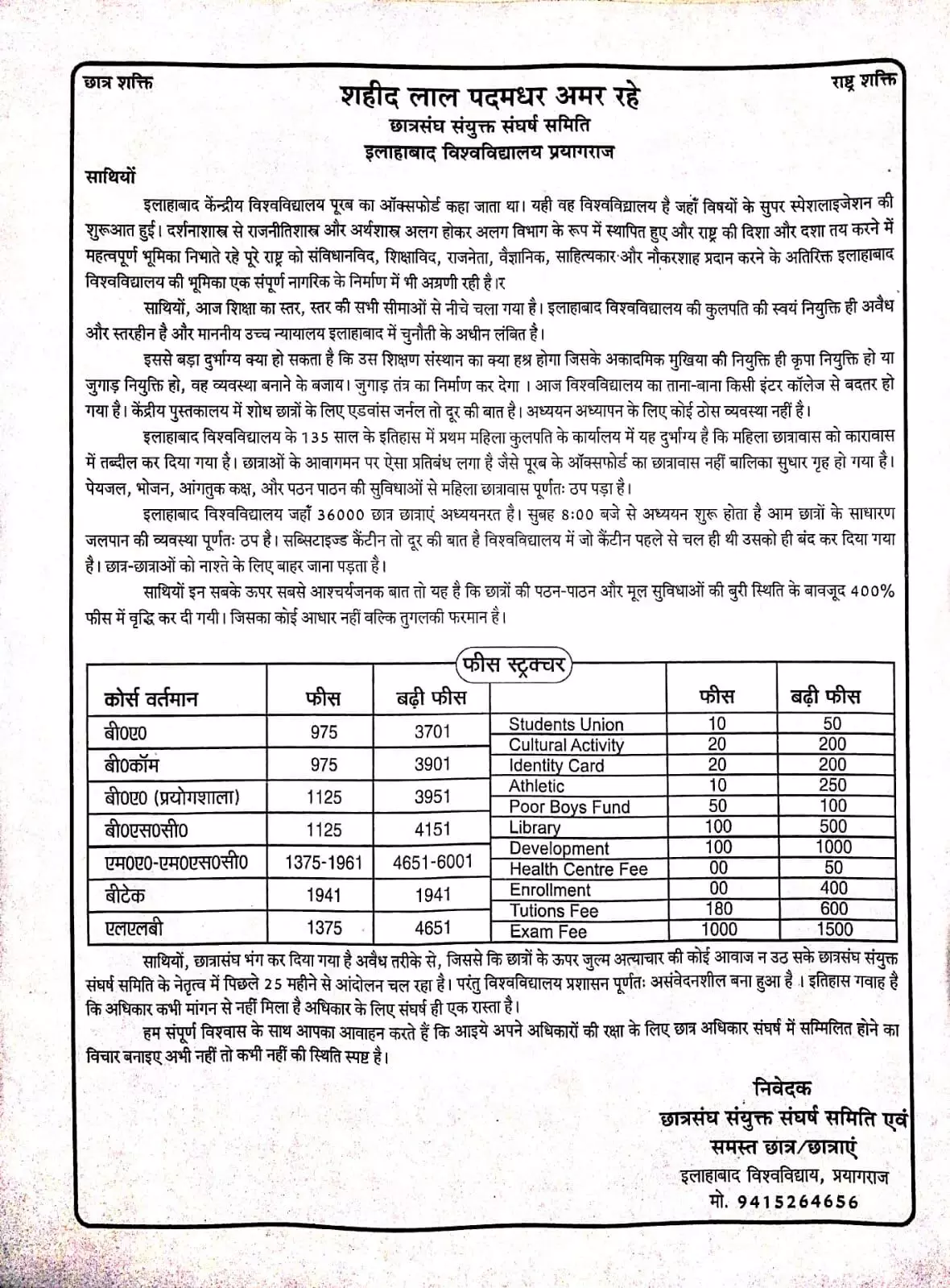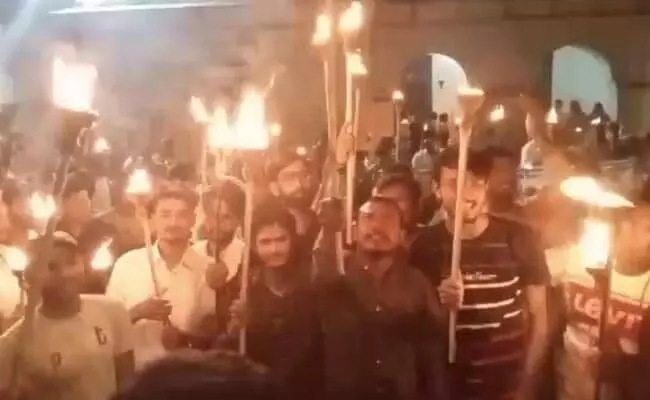On August 31, while announcing the academic curriculum for the 2022-23 academic year, the Prayagraj-based Allahabad University announced a hike in its fees after a year-long consultation with the stakeholders.
However, the decision to increase the fees attracted the ire of the students’ organisations specifically, the Chhatrasangh Sanyukta Sangharsh Samiti, which has been spearheading the protests ever since the decision to hike the fees was announced. The organisation announced a hunger strike on September 1 which led to sporadic protests and agitations during the first week of September.
Two weeks later after announcing the fee hike, in a press statement issued on September 14, the university’s public relations department panned out the details of the hike in fees ranging from undergraduate courses to research studies.
In the press statement, public relations officer Jaya Kapoor claimed that the need to hike the fees had become imminent as the ‘University education stands at a watershed moment from where the direction of education in the times to come will be decided’.

“With the coming of the present Vice Chancellor, the efforts to revive and rescue the institution from complete disaster are being made almost on a war footing,” the press statement mentioned.
“The University of Allahabad facing reduction in funds like other institutions but desisted from raising the fees (sic). Various factors played a role in stopping attempts to raise the fees. The most important one has been the petty vested interest of cheap popularity and gimmick of headline grabbing by the so-called student leaders who tried to catapult into headlines on pretext of agitations which would open an easy door into political circles,” the statement added.
The university administration claimed that the decision was taken to raise the fees for the first time ever since the university came into existence as an independent entity in 1922. It explained that the fees were raised and brought almost at par with the other central universities and is still lower than most of them.

“If we take the fees for science students in an undergraduate class, the fees for the university is the lowest (approximately Rs 4151/-) in the bracket among all the other central universities. The same is the case for other courses where the fees even after the hike remains the lowest of among the lowest across the comparable major central universities. The university is sensitive to the interests of the student and so the present students in various courses have been kept out of the ambit of fee hike,” it stated.
Also, Sangita Srivastava, the vice chancellor of the central university pointed out in the statement that the tuition fee per month for the past 110 years has been Rs 12.
“In order to pay running electricity bills and other maintenance the fee was due to be enhanced for number of years. For want of maintenance all HEI s are deteriorating. The private institutions are now the major players. They charge exorbitant fee. If the little fee that is enhanced crests so much ruckus amongst the stakeholders, they should realise that the these institutions providing education such low fee shall perish in due course (sic),” the vice chancellor warned.
Torch march by the protesters
Despite numerous attempts by the university officials to pacify the protesting students, the student unions spearheaded by the Chhatrasangh Sanyukt Sangharsh Samiti continued their protests and launched serial hunger strikes throughout the second week of September.
On September 15, two of the students, Manjit Patel and Rahul Saroj, were reportedly admitted to a hospital after their health worsened due to their participation in the hunger strike.

Also, on the same day, in the evening, hundreds of students from the university took out a protest march carrying torches in their protest against the fee hike.
Politicians’ support to students
The students’ protests in their demand to roll back the fee hike has garnered political support from two of the biggest opposition parties in the state — Samajwadi Party and the Congress.
In a tweet posted on September 13, Congress leader Priyanka Gandhi Vadra stated that the 400 per cent fee hike by the Allahabad University is another anti-youth move by the BJP government.
युवा विरोधी BJP सरकार: महंगी शिक्षा, भर्तियों में भ्रष्टाचार, खत्म करे रोजगार
इलाहाबाद विवि में पढ़ने वाले छात्र-छात्राओं को 400% ज्यादा फीस चुकानी पड़ेगी
उत्तराखंड में युवा भर्तियों में भ्रष्टाचार के खिलाफ सड़कों पर उतरे हैं
अगस्त महीने में बेरोजगारी दर सबसे ज्यादा। pic.twitter.com/w9mkfX4JLG
— Priyanka Gandhi Vadra (@priyankagandhi) September 17, 2022
Vadra added that children from ordinary families from Uttar Pradesh and Bihar study the university and “by increasing the fees, the government will take away a major source of education from these youth”.
Yadav tweeted yesterday that the BJP government in the state is forcing students to resort to immolate themselves. Talking to the press from within the university premises, Santosh Kumar Meena, the superintendent of police in Allahabad stated that the students trying to kill themselves in protest have been brought under control.
जो सरकार छात्रों को आत्मदाह के मुहाने पर ले जाए… उससे युवाओं को नाउम्मीदगी और हताशा के सिवा कुछ नहीं मिलेगा।#भार_बन_गयी_भाजपा pic.twitter.com/f52e7jMSUy
— Akhilesh Yadav (@yadavakhilesh) September 19, 2022


















